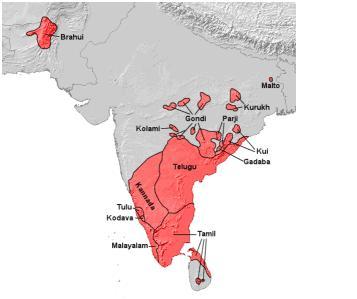If it’s true that Sanskrit is the oldest language of the world, then a question arises as what was its origin? When did it first appear? And it for sure that no one in this world can answer for this question accurately. But some of the western scholars have tried to figure this out. And there are some interesting theories about the origin of the Sanskrit. As we know along with Sanskrit the other two languages like Greek and Latin also considered as the earliest languages of the world. And both of them are genuinely similar to Sanskrit. We can see some of the words used in all these languages are almost all same. Let’s take a look at some of the words that all three languages share, and compare them to their English equivalents as well:
Sanskrit | Greek | Latin | English |
go | bous | bos | cow |
danta | odontos | dens | tooth |
pitar | pater | pater | father |
nakta | nuks | nox | night |
asti | esti | est | is |
bhar-asi | pher-eis | fer-s | you bear |
The similarities between these languages are so well built and so undisputable that the scholars came into a conclusion that these languages are not only similar but related.
One of the English scholar William Jones said this about Sanskrit:
“The Sanskrit language, whatever be its antiquity, is of a wonderful structure; more perfect than the Greek, more copious than the Latin, and more exquisitely refined than either, yet bearing to both of them a stronger affinity, both in the roots of verbs and the forms of grammar, than could possibly have been produced by accident; so strong indeed, that no philologer could examine them all three, without believing them to have sprung from some common source, which, perhaps, no longer exists”; …Sir William Jones, in a speech delivered to the Asiatic Society in February 1786 (emphasis added).This quote makes a beginning for the fantastic period of study into the history and origin of these languages. Scholars of these languages, which are collectively, called the "Indo-European languages," wanted to answer one question above all others: where did these languages come from?
The source:
A proposed map of the migration of PIE. India is in the lower-right corner.
Another scholar from western states that –
“India is the cradle of the human race, the birthplace of human speech, the mother of history, the grandmother of legend, and the great grandmother of tradition. Our most valuable and most instructive materials in the history of man are treasured up in India only”. Mark TwainBy this we can conclude that Sanskrit along with languages like Greek and Latin originated from a common language which was different from all three of them. We don't know what this language was called. Today, most people call it Proto-Indo-European or PIE for short. We also don't know when this language existed; but, it was likely used some time before 3000 BC. PIE is hypothetical, and no record of it remains; but over the years, our picture of the language has
Become clearer, and now we have a fairly good understanding of what it must have been like. Although we can never be sure of this picture, scholars have a lot of evidence to support it.
In the beginning the scholars considered that this PIE may have its origin from outside India. But later some of them thought the Dravidian languages, which once used to be spoken allover India may be the origin of PIE some of them mapped its origin as below –
But this theory also disproved due to lack of evidence.
Wherever this language has came from but it started to spread across Asia and Europe. And it witnessed changes as it started to spread. This may be the relationship between Sanskrit, Greek and Latin.
A brief History of Sanskrit:
A brief History of Sanskrit:
Vedas are known to be the first literature of Sanskrit and of the world. After Vedas Sanskrit witnessed some important changes in its feature. As the famous grammarian Panini put this language under some rules which almost seem like he froze the language from its fluid nature to an unchanged and timeless language.
After Panini’s work the proper Sanskrit witnessed its beginning. And till now it is survived according to the base given by Panini.
There is a famous saying in Sanskrit –
“Yadihaasti tadanyatra ynnehaasti na tat kvachit”
Which means – “what is there in this language is present in the rest of the world, and what is not here can’t be seen anywhere”.
So the study of sanskrit may help us in understanding our ancestors views, their theory about life and it will make us to feel as if we are going back to thousands of years ago, traveling in our ancient world, society and culture.



